Sustainable fashion brands are getting cozy with ethical wool that promises to be a better deal for animals and the planet.
But is wool ethical, really? Or is someone trying to pull the wool over our eyes with some greenwashing tactics?
People have been wearing wool since 10,000 BCE. It’s one of the oldest textiles in human history.
While the ethical nature of wool probably wasn’t questioned back then, today, there are multiple concerns regarding the wool industry.
Most fashion fabrics deserve scrutiny. As an animal-derived fabric, wool calls into question not only its impact on the environment and workers in the supply chain, but also its impact on wool-producing animals.
So, how baa baa bad is wool? Can we still wear it?
Determining if wool is cruel is not as straightforward as we’d like. To avoid any woolly thinking, we’re taking a deep dive into the wool industry to unravel the ethical considerations.
Contents: Can Wool Be Ethical?
- Subjective Ethical Wool Considerations Jump to section
- Ethical Issues With Wool Jump to section
- Ethical Wool Production Jump to section
- Is Wool Sustainable? Jump to section
- Different Types Of Ethical Wool Jump to section
- Ethical Alternatives To Wool Jump to section
- Brands That Use Ethical Wool Jump to section
Subjective Ethical Wool Considerations
Before we dive in, we’d like to start with a disclaimer.
While we’ve rounded up the facts and figures concerning the creation of ethical wool yarn, we’re not the arbiters of each individual’s ethical compass.
When it comes down to it, determining whether wool is ethical or not will ultimately be a personal opinion.
It’s a similar situation to the beeswax debate. While some people don’t see harvesting beeswax or honey as harming the bees, many do, and it also boils down to the particular beekeeping practices used—and your own particular values and views.
On the one hand, wool is a renewable resource. Since it’s a natural animal-derived fiber, it’s also biodegradable to the point of being considered compostable (provided it’s not blended with other fabrics).
On the other hand, wool production involves animals and different standards of animal care and animal farming practices dictate both the sustainability and ethical issues involved.
Is Wool Vegan?
As an animal product, wool is, by definition, not vegan.
While they can be considered a “renewable resource”, many would rather look at animals not as a source of raw wool material, but as gentle, sentient beings deserving of love and fairness—a sentiment we can absolutely relate to.
So, do vegans wear wool?
Generally speaking, vegans don’t wear wool products. Some people may make exceptions for second-hand wool garments or those made from recycled wool, but, as with beeswax, it is very much a personal choice and there is no one right answer.
Ethical Issues With Wool
Each type of wool (determined by the particular breed of sheep or other wooly animal it’s harvested from) is associated with different issues when it comes to ethics. We’ll get into specifics on these below.
As with any money-making venture that involves animals, maximizing profits, more often than not, means cutting corners and sacrificing the well-being of animals.
Is Wool Cruelty-free & Humane?
First, are sheep killed for wool?
No, sheep are not killed for their wool. In fact, because wool keeps growing back and can continually be harvested for profit, it would be a bad investment for anyone involved in wool farming to kill their wool source.
Just because an animal isn’t outright killed—as often occurs in the leather industry—doesn’t automatically mean the animals are treated like living beings.
Many of us have read taglines like PETA’s “there is no such thing as humane wool”.
Across the wool industry, sheep welfare is a concern. Disturbing footage of wool-shearing operations in Australia and the United States has been released on several occasions.
In these clips, sheep are commonly seen being abused and maltreated.
So, for those asking, “Is wool cruel?”, the answer, sadly, is that the wool industry can involve some extremely cruel and inhumane practices.
One of these practices is mulesing, which is illegal in Europe and New Zealand but still commonplace in Australia, where it is carried out on 70% of sheep farmed for their Merino wool.
The practice entails young lambs restrained on their backs while flaps of skin are carved off the buttocks—in some cases without anesthetic or adequate pain relief.
This renders the rear flank scarred and smooth to prevent flies from laying eggs in the folds of the wool. The intention is to reduce the risk of fly-borne disease (a serious disease affecting sheep).
The RSPCA’s position is that “it is unacceptable to continue to breed sheep that are susceptible to flystrike and therefore require an ongoing need for mulesing or other painful procedures to manage flystrike risk”.
They call for breeding solutions and encourage retailers to only buy non-mulesed or mulesing-free wool.
Organizations such as Humane Society International are also campaigning to end mulesing, and their Better Wool Guide assists conscious consumers by ranking over 100 brands that shun the practice.
Mulesing is, however, just one practice that raises serious animal welfare issues. Others include tail docking.
Ethical Wool Production
Does cruelty-free wool exist? And if so, what does ethically-sourced wool mean?
It’s important to paint both sides of the picture. Not all wool operations are inhumane.
Due to selective breeding, a sheep’s coat will keep growing until it becomes difficult for the animal to move and risks overheating in warmer weather. Shearing, therefore, becomes a necessity.
However, we do need to pay close attention to individual farms that produce wool, namely how sheep are shorn and looked after in between.
Cruelty Free Wool: Which Wool Is Ethical?
New Zealand (where sheep far outnumber people) is the global leader of the ethical wool industry. The country’s Animal Welfare Act strictly prohibits mulesing.
There are also artisanal-scale wool processing facilities around the globe that demonstrate higher standards of animal care. In these places, sheep are kept in low-density flocks, raised free-range, and can enjoy all-round better conditions.
Shearers respond to thick winter coats by shearing them when they get heavy or when the weather warms, so they’re not depriving the animals of necessary insulation in colder seasons.
These sheep farms steer clear of mulesing and use hand shearing practices that minimize accidental cuts and avoid undue fright and stress to the animals caused by machines.
How Do You Know If Wool Is Ethically-Sourced?
Many ethical wool clothing brands now source cruelty-free wool that has been certified by a third party.
These include:
- Responsible Wool Standard (RWS)
- Certified Organic Wool
- Certified Animal Welfare
- Certified Humane®
- ZQ Merino
- Soil Association Organic
- Climate Beneficial™ Wool by Fibershed
These labels provide assurance that the sheep were raised in a way that’s better for their well-being and (usually) the environment.
To avoid inhumane practices, some brands have even taken matters into their own hands. Fjallraven, for example, decided to improve their sourcing and transparency to such an extent that they decided to raise sheep of their own.
While some people believe wool can never be ethical, we think it can be, but it’s a really high bar.
We recommend looking for relevant certifications at the bare minimum if you do decide to buy wool.
Is Wool Sustainable?
One of the reasons that wool is subject to so much recent debate in eco-minded circles is because it is one of the more sustainable fabrics out there.
While not a vegan fabric, wool is naturally produced and a great alternative to petroleum-derived synthetics like polyester and nylon (ahem, plastic).
While vegan wool alternatives exist, they often take the form of synthetic fabrics, especially in insulating or active garments, as these provide the closest substitutes for some of wool’s most valued performance properties.
It’s an unideal trade-off of something that might have ethical issues for something that definitely has environmental ones.
While definitely an improvement over microplastic-shedding, petrochemical-derived synthetic, is wool environmentally friendly in the grand scheme of things?
Some of wool’s sustainability attributes:
- Wool is renewable
- Wool biodegradable
- Wool is compostable
- Wool is durable
- Wool is a renewable resource
Wool is a natural, renewable resource. It is inherently biodegradable and (when not blended with other fabrics) can be composted at home.
It’s also easily repairable and super durable—the number of wool clothing items you can find in vintage and thrift stores is a testament to this.
It can also be processed organically without the use of harsh chemicals.
Wool’s naturally antimicrobial and anti-odor properties mean it can be washed less frequently than other fabrics. When it is washed, pure wool won’t release microplastics into waterways and ultimately oceans.
At end-of-life, wool fabrics don’t have to end up in landfills (provided we as consumers properly recycle or compost them) as they can biodegrade in a reasonably short amount of time.
All of the above points knit together a pretty sustainable picture.
However there are two sides to wool’s sustainability story that leave some people a little wary about wool.
While wool fabric can be sustainable, most of its ecological impact comes from the raw material sourcing stage.
Industrial livestock grazing typically means land clearing and environmental degradation, not to mention the amount of methane gas released from any large quantity of livestock.
Conventional sheep farming also often involves the use of fungicides and insecticides.
However, the environmental impact of sheep can be greatly reduced, and even wholly negated with proper practices.
Sheep raised through regenerative farming techniques can actually be climate positive by improving soil health and increasing biodiversity. Sustainable wool is certainly possible.
Fully intent on actioning the belief that “our clothing can be a carbon sink”, the organization Fibreshed supports producers who use regenerative agriculture and sheep grazing practices that draw down a quantifiable amount of carbon.
They help connect designers and brands with these sheep farmers to grow regional supply chains. The membership network started out in California and is now spreading to other countries around the world, including the UK and Europe.
Regarding wool processing and manufacturing, it’s important to note that, similar to conventional cotton production, conventional wool production involves multiple chemicals, including bleaches, scouring agents, moth-proofing chemicals, and dyes.
Just as we would opt for organic cotton over conventional cotton, we recommend buying certified organic wool.
Different Types Of Ethical Wool
If you thought that wool was only made from sheep, think again.
Wool can be obtained from several different animals—from alpacas and goats to llamas and yaks… even rabbits!
We’ll look at some of the ethical considerations for some of these different animals.
Is Merino Wool Ethical?
When comparing virgin wool vs merino wool, the latter is certainly the wool of the modern era.
Undoubtedly one of the most popular types of wool (and used by many sustainable clothing brands), Merino wool is softer and lighter than other types of yarn, making it one of the most comfortable wool types to wear.
Ethical merino wool does exist—but you’ll have to do your research to ensure that you only buy from mulesing-free brands that treat animal well-being as a priority.
Check for labels like the Soil Association Organic, ZQ Merino Standard, and Responsible Wool Standard (RWS).
Is There Ethical Angora Wool?
Angora is produced using the silky fiber from an Angora rabbit. This fur is soft and strong. It’s often combined with other types of wool to make warm and winter-ready items.
Large-scale angora production typically involves plucking (yes, you read that right), causing pain and distress to the rabbits.
Over 90% of the world’s angora is produced in China, a country with some of the world’s most limited animal welfare standards. The rabbits are killed after they stop producing adequate fur.
It’s debatable whether Angora wool can ever be produced ethically. On a very small, non-commercial scale, it’s possible. Angora rabbits molt every four months, and their hair can be collected after it falls.
However, several seemingly insurmountable ethical issues with keeping rabbits on a commercial scale include their inability to free-range.
That’s why, for now, we recommend avoiding Angora wool unless you are keeping Angora rabbits yourself and processing their wool on a micro-scale—the only way to ensure you’re getting ethical Angora wool.
How Ethical Is Cashmere Wool?
Ahh, the cashmere sweater.
Many classic closets will have at least one, but how does this timeless and coveted luxury quality wool compare to other types of wool?
Cashmere dates back to before the 13th century—the infamous Marco Polo allegedly stumbled upon the goats used to make the fabric while exploring Mongolia. Cashmere has since been used all around the world for providing optimal warmth and high-end comfort.
If the high price tag of that cashmere scarf isn’t enough to deter you, maybe the greenwashing will be. Brands may stretch the truth regarding their claims about sustainable and ethical cashmere wool.
Cashmere has been linked to environmental degradation in Mongolia. It is typically subjected to a range of chemicals during its processing. It’s also been associated with underpaid workers.
If you’re really sold on cashmere for the winter, try to source it from a brand that uses recycled cashmere fibers for the most ethical cashmere.
For recycled cashmere, look for the following certifications or standards:
Otherwise, look for virgin cashmere with the following certifications or standards:
- Good Cashmere Standard ® (GCS)
- Sustainable Fibre Alliance (SFA) Cashmere Standard
- Kering Standard on Cashmere
- Global Organic Textile Standard (GOTS)
Better still, go thrifting! You’re likely to score a bargain cashmere cardigan on your next thrifting adventure.
Is Alpaca Wool Ethical?
As with sheep farming, the farming practices and animal welfare standards for alpacas vary.
A shocking PETA exposé of a large alpaca farm in Peru led several fashion brands to eliminate alpaca wool from their supply chain.
However, as with sheep, alpacas’ can be raised in a way that prioritizes their health and well-being. When raised in small, free-roaming herds and gently shorn using traditional hand methods, ethical alpaca wool is possible, but again due diligence is needed.
Alpacas also yield some of the most eco-friendly wool, especially when compared to cashmere sheep, whose fur they most resemble.
While cashmere goats have a high impact on the fragile alpine environments in which they live and graze—so much so that countries like Mongolia known for their cashmere farming are experiencing desertification—alpacas are gentle grazers.
Instead of ripping up entire plants by the roots as they graze like the cashmere sheep, alpacas target the top greenery and leave the root systems intact, allowing the plants to regrow.
Ethical Alternatives To Wool
While many wool and merino alternatives take the form of synthetic fibers, it doesn’t have to be that way.
Some of our favorite eco-friendly fabrics serve as suitable fabrics to replace wool—at least for some of its uses.
If you’re looking for a cruelty-free fabric, you could look into lyocell fabric (also known as TENCEL™ lyocell).
If you need something breathable yet warm, hemp or bamboo could be a good choice, especially if you’re looking to replace wool in a base layer fabric.
Like wool, hemp is also antimicrobial and breathable, making it great for a light, next-to-skin layer.
However, while these natural fibers can replace some qualities of wool, they cannot replicate its most valuable one: the ability to insulate and regulate temperature even when wet.
There’s a reason why backcountry and mountain enthusiasts live by the phrase “cotton kills”.
This is why wool is so valued in the outdoor clothing industry, and why one of the most common vegan wool alternatives is polyester.
While virgin polyester, like other petroleum-based synthetic fibers, should definitely be avoided, recycled polyester, made from post-consumer plastic waste, provides a more sustainable option.
Recycled wool is another ethical and sustainable option for those who aren’t opposed to wearing the fabric.
Brands That Use Ethical Wool
Wool in fashion is experiencing a revival.
Wool’s temperature regulation, moisture absorbing, and antimicrobial properties make it the ideal fabric for getting sweaty in either hot or cold environments.
But so many of these merino clothing brands produce wool items in a way that doesn’t make us feel sheepish to wear their goods? For example, is Smartwool ethical?
Fortunately, yes. Perhaps well-known of all mulesing-free brands, Smartwool uses only Gold standard ZQ Merino wool that’s been sourced exclusively from New Zealand wool farmers.
And they’re not the only place to go for sustainable, cruelty-free wool clothing. Other brands include:
- Fjallraven who are raising non-mulesed sheep of their own to ensure complete control of animal treatment, many brands have made traceability and ethical pledges about the type of wool fabrics they source.
- Patagonia guarantees to source only RWS-certified wool, and they also make sure that the wool is produced with low environmental impact. The Patagonia Wool Standard goes beyond the RWS to ensure the highest animal welfare standards.
- Stella McCartney and Reformation have partnered with the NATIVA™ Regenerative Agriculture Program. NATIVA™ wool is a fully traceable, regenerative Merino sourced from six different countries.
- Stella McCartney, ADAY, and Another Tomorrow only use recycled cashmere.
- Naadam, on the other hand, blends recycled and virgin organic cashmere together.
- Armes of Andes and SLATE + SALT carefully source their alpaca wool from small free-roaming herds in the Peruvian Andes that are well looked after.
Numerous other brands like these do exist—you’ll just have to do a little extra research (or read our articles for our top recommendations) to make sure that they are using ethically sourced and cruelty free wool.



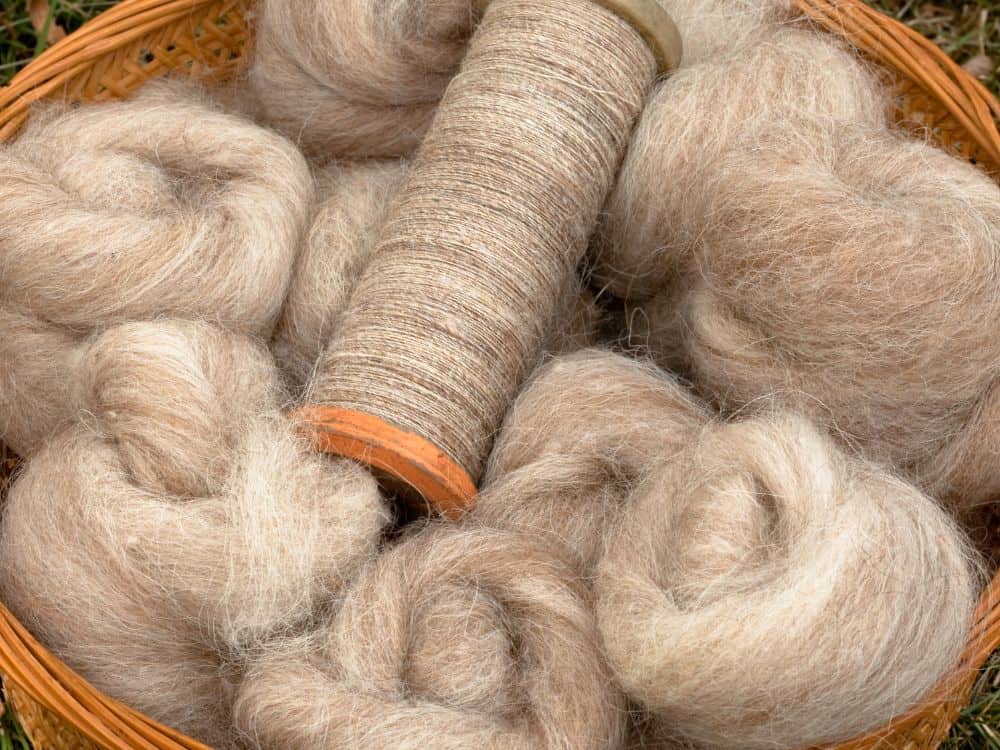
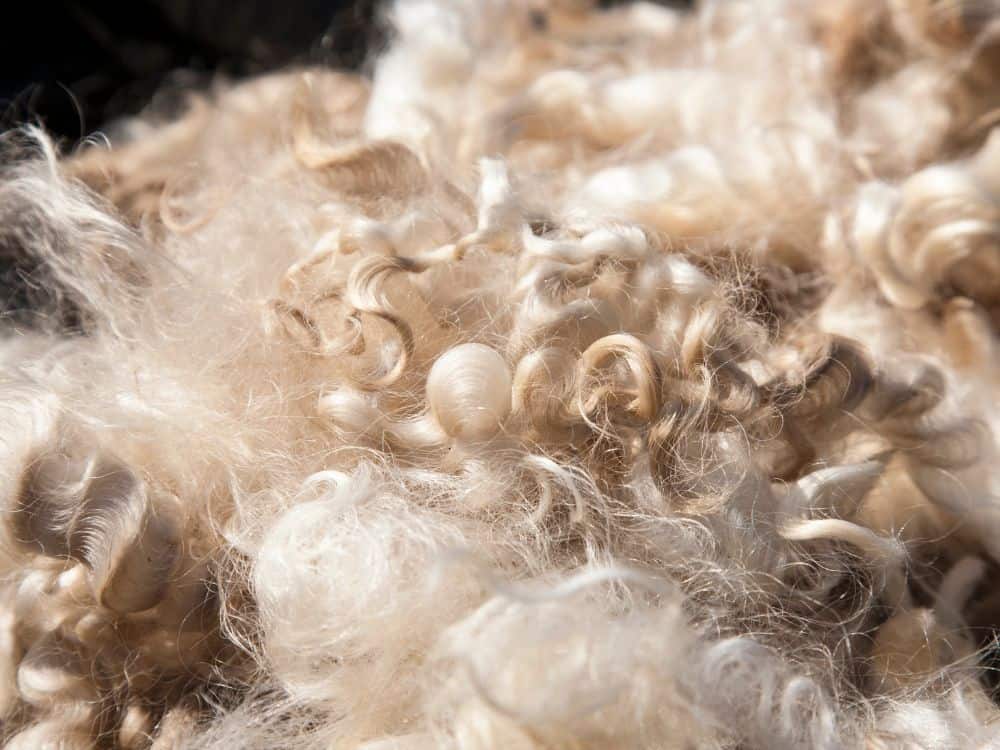
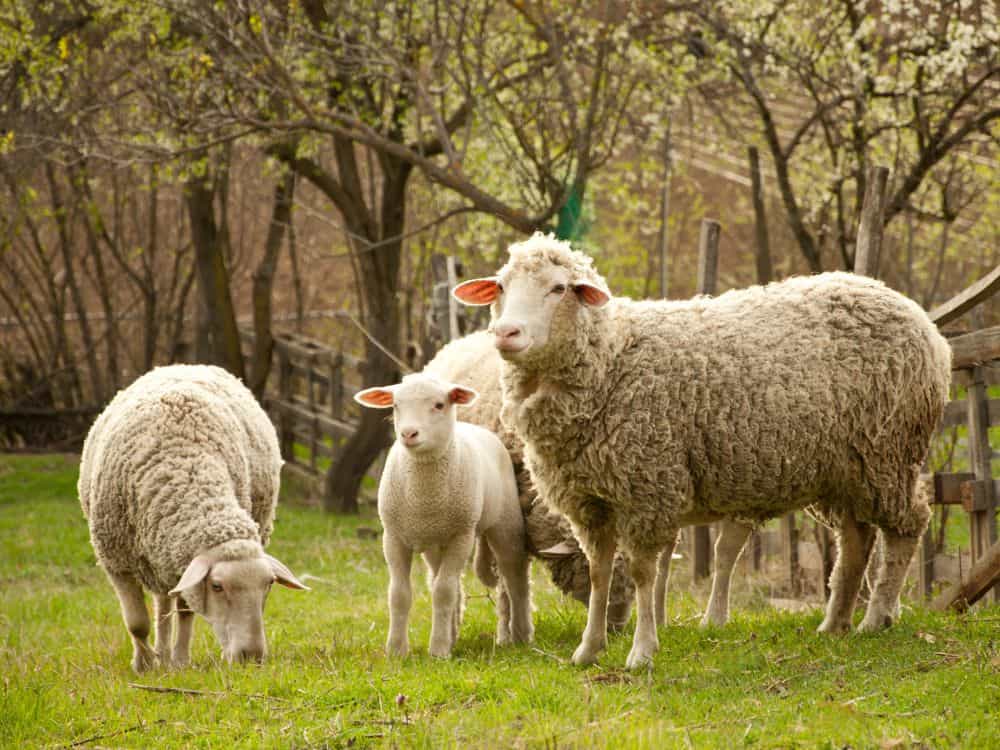
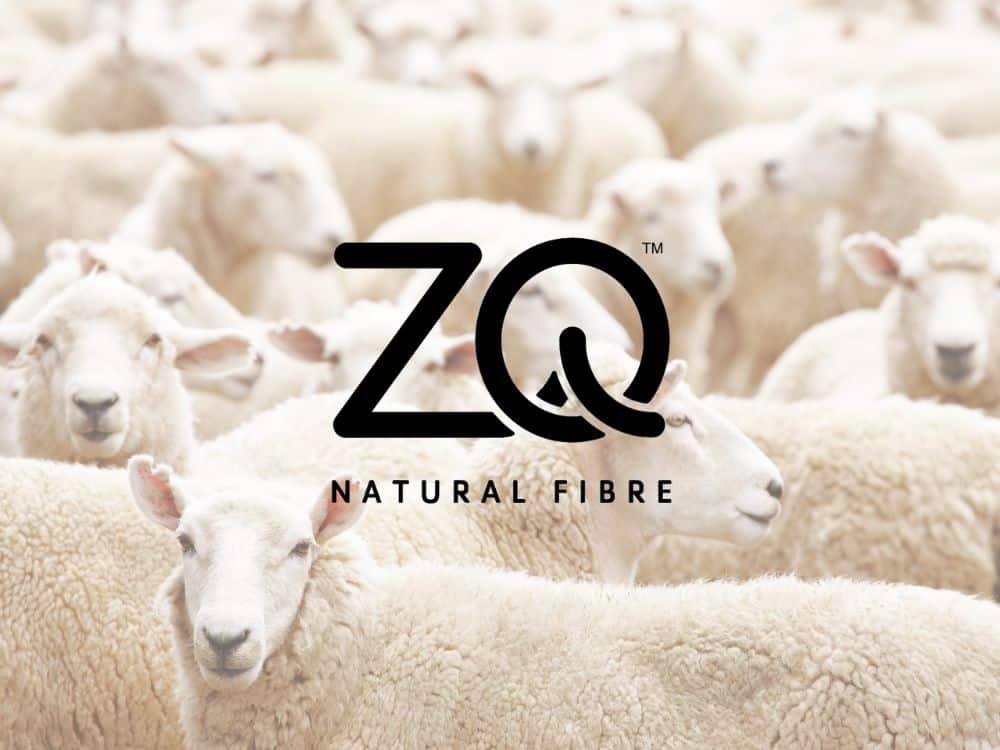
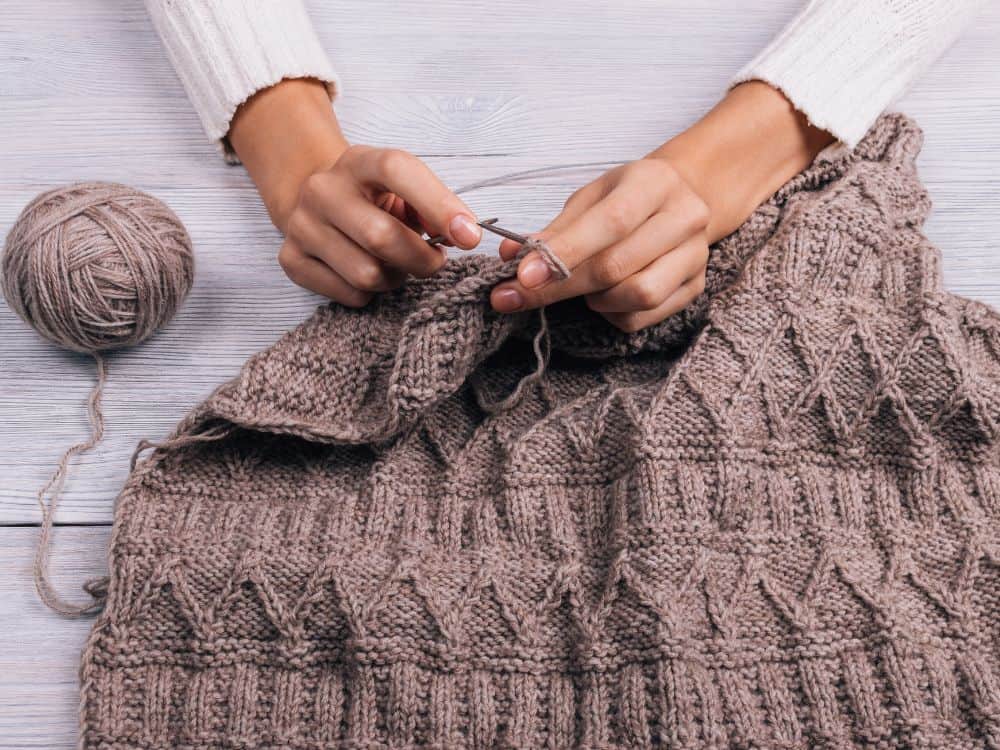
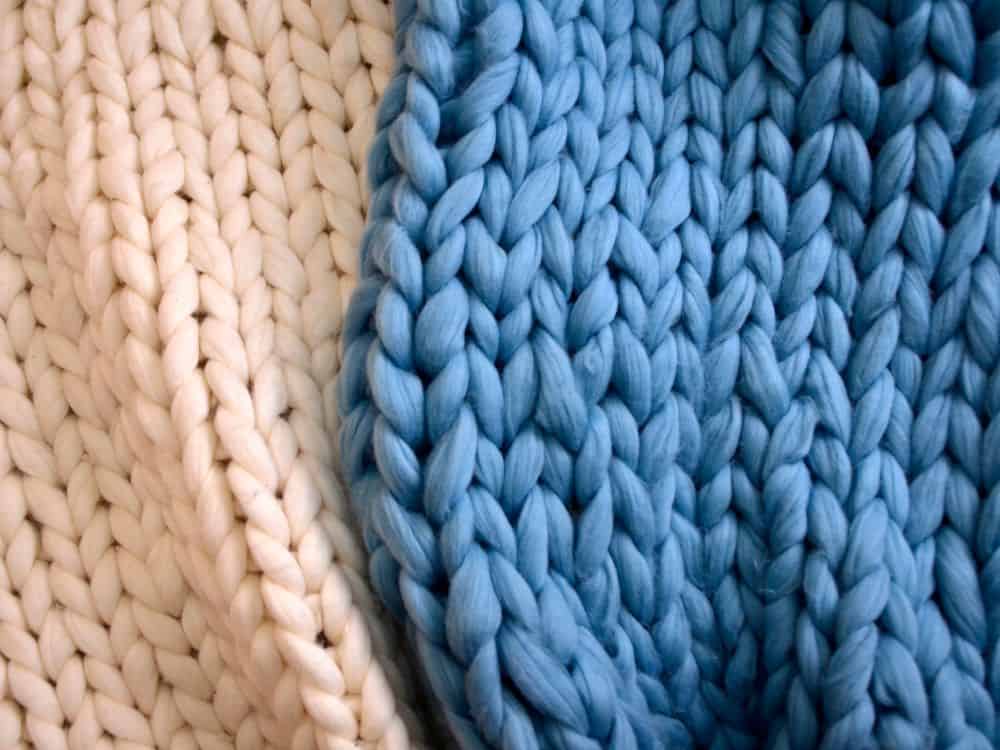
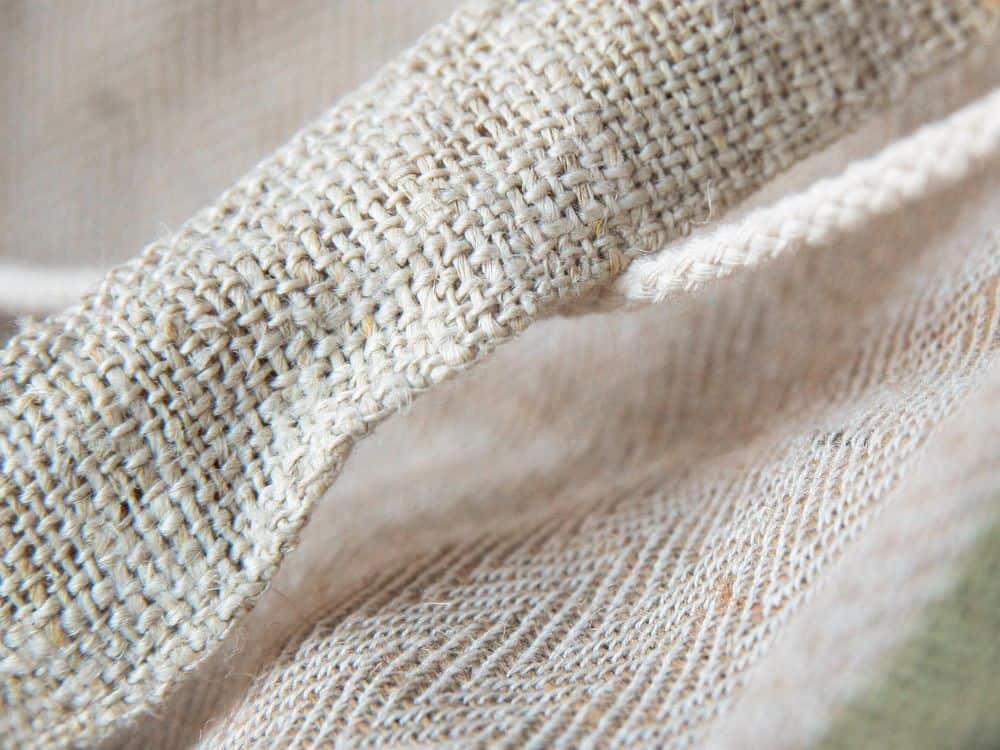
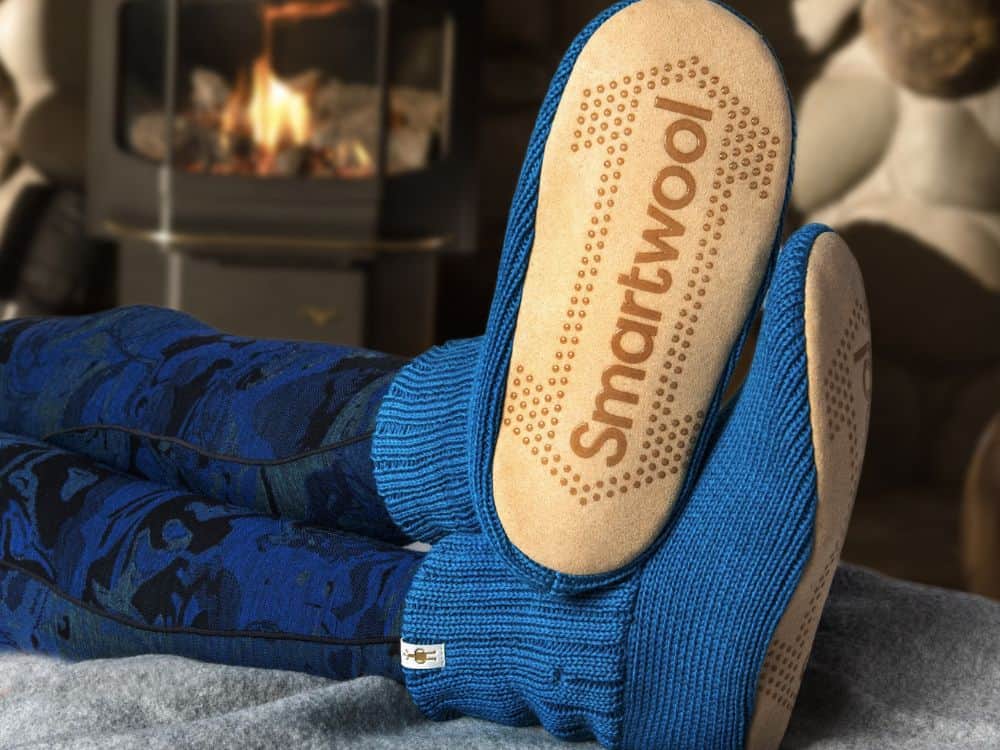
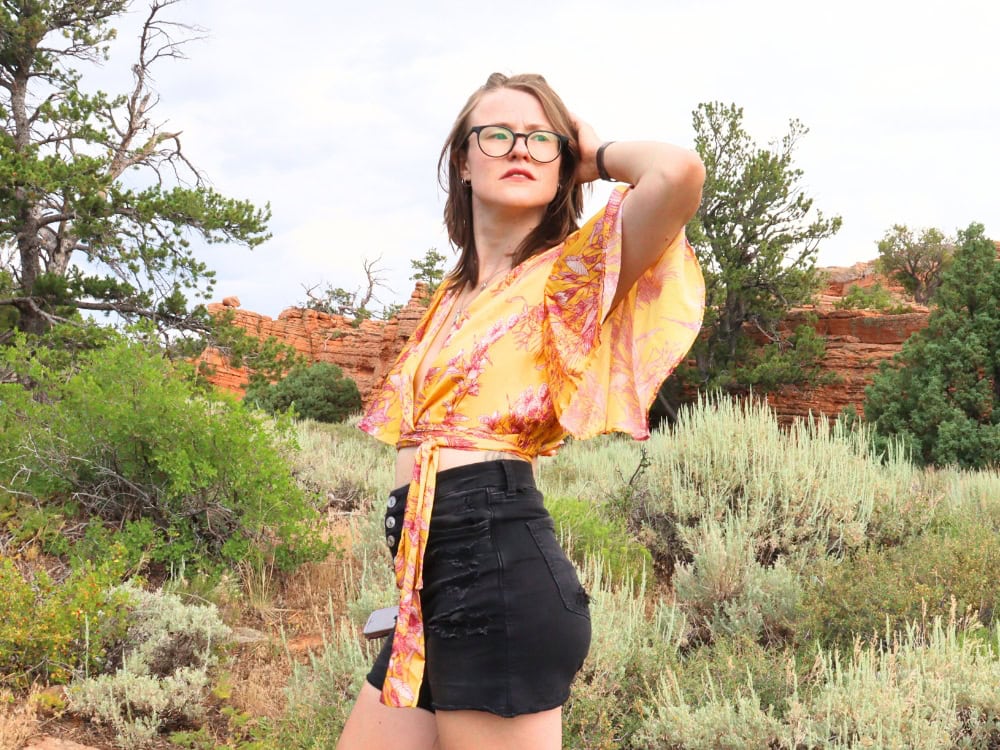
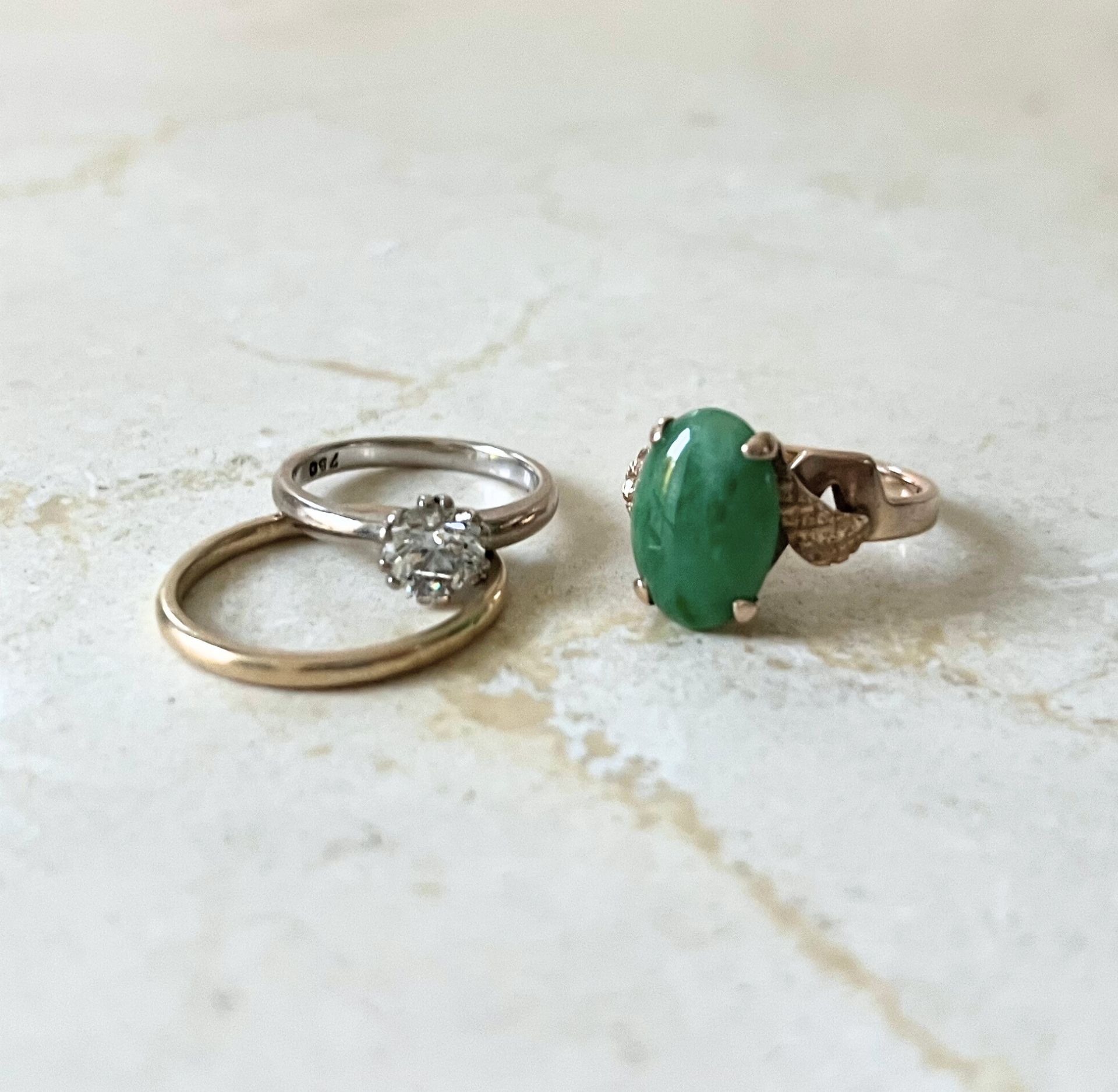
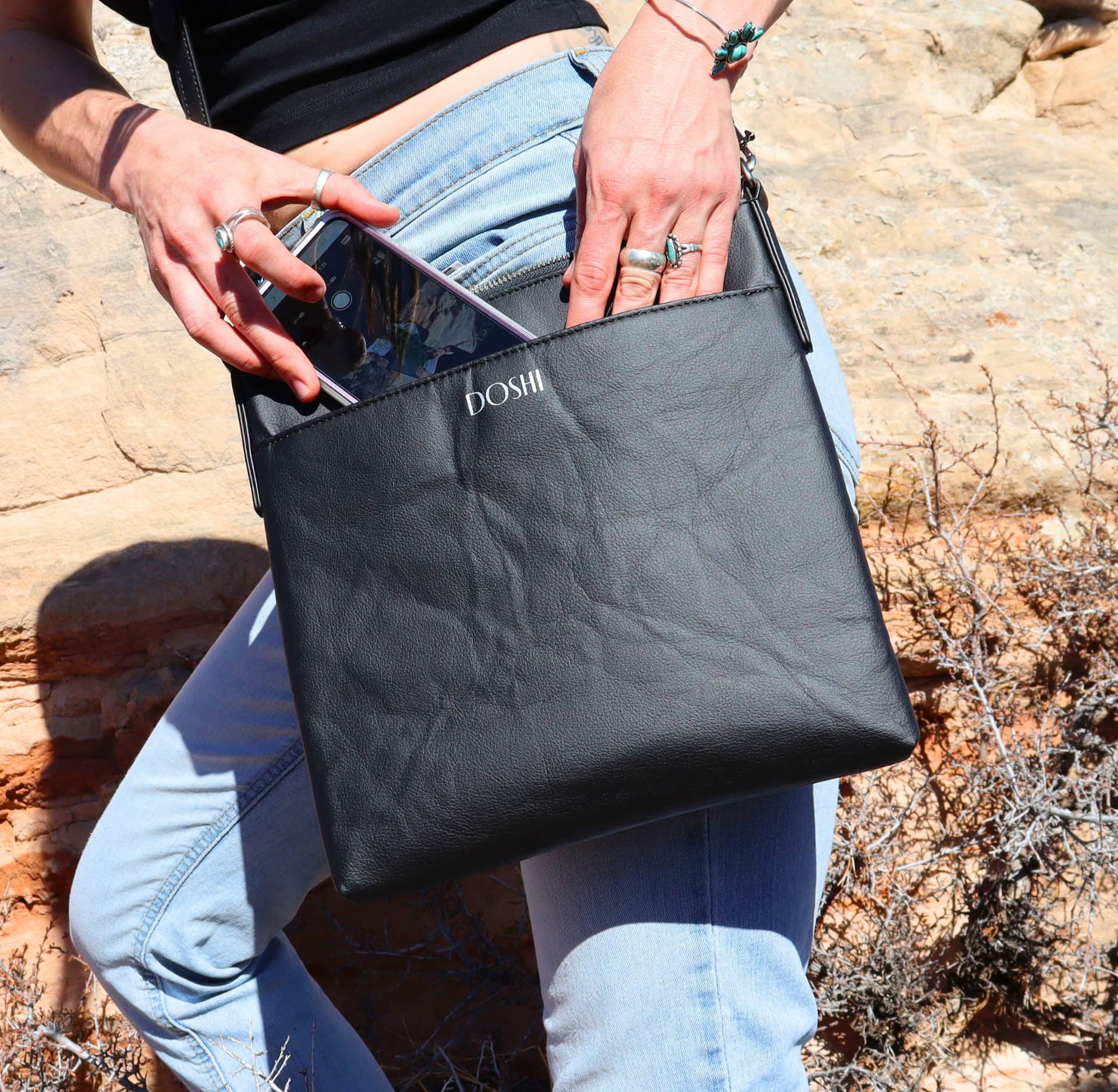

Thank you for educating me. It’s so hard to do the right thing these days because so many businesses have their hands in different pots, muddying the waters. It’s good to know there are some companies trying to do right by our fellow earth dwellers.
Hello,
I raise sheep for wool. I am a kind farmer and my sheep live an excellent life. Their shearing is kind of like a 3 yr old getting a haircut. It’s not always fun but the grain at the end is good. We also don’t need to mow our 6 acres because of them.
I would encourage you to buy wool/yarn from local farms and Shepherds. Try Etsy if you can’t find local people. Wool is biodegradable! Unlike that many fabrics.
There are many shepherds and farmers who love their animals. Support those people please.
Are you on Etsy? How can we find you? What name are you under?
The ethical battle of environmental damage with synthetic products and animal welfare is a minefield there is little information on the source of natural products to inform an ethical decision therefore it would be in the interest of companies to be more transparent where welfare is concerned open themselves to the vegan markets
Lovely article. I’ve been strictly vegan for 5 years but I notice an insane amount of difference for the better when I use Woolsmart socks. What I miss being mentioned is with all strict ethical wool suppliers, none mention the killing of the sheep at the end of their life. All I wish for was a wool supplier that didn’t separate the males and females and didn’t kill the sheep. That, sadly, I haven’t found yet.
I’m having a really hard time with this. I haven’t bought wool in years. And while I don’t see a problem with making use of something that comes from an animal… I really don’t trust those that use animals to make their money. Just because, as the article pointed out, it often means cutting corners. Could it be done ethically? Of course. But I think it is much more difficult, so people don’t bother. Another concern is what happens to the animal when it’s no longer making them money? You could treat them wonderfully the whole time… right up until the end.
My struggle with this right now is shopping for a new mattress. I want an natural mattress, but the reality is that there are only 3 brands that aren’t just green washing things. And two of them (under the same umbrella) only make mattress with wool. So the obvious pick is to go with the the other brand that as a wool free option. But the mattress is apparently quite firm, especially for smaller people. So I’ve really been debating the wool thing here. I contacted the company and they stated that all their wool is certified organic, but it comes from all over the world. So there is no traceability. It’s just so hard to make the right choice when it comes to animals. We live in a world that exploits and tortures them, and it’s impossible to not participate in it on some level. I’m just trying to figure out how I can do the least harm, while still carrying on with my life.
Ugh Gwen, I feel this, the anxiety over the right thing to do is just overwhelming sometimes.
Excellent article, thank you. Really helpful and informative. And I am glad it exists – let’s keep moving in this direction of ethical shopping choices x
Very informative article! Thank you for the links. I really appreciate y’all taking your time to educate people (including myself) with ethical brands.
Tip: WoolOvers is another great brand.
im looking for wool for needle felting, if you could add an article about raw wool i think you will have covered everything! this was super helpful in understanding diffrent types of wool and what to look for before buying! i agree that wool can be a great thing if the animals are treated right and live happy lives 🙂
I too am a felter and struggle with the ethics.
Thank you so much for this very thorough article. My son (9) has a huge interest in sheep in particular, and animal welfare in general, and as such I have sought out information to share with him. His current dream is to be a sheep farmer / wool producer (I’m sure it will change a few times), but it has made me curious myself about the ethics of it all.
Just wanted to say this was a really informative article, and I appreciate the links you included for further research.